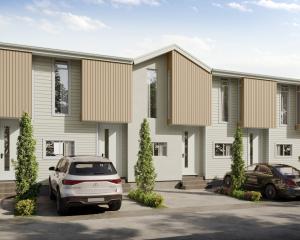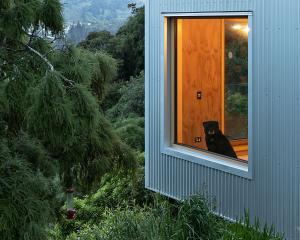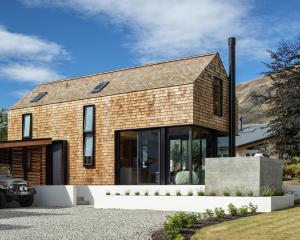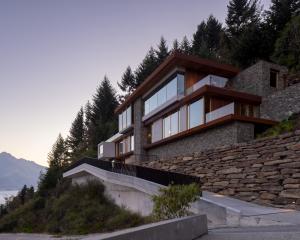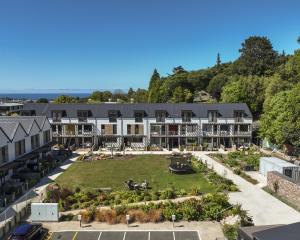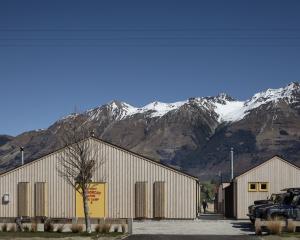
The wild west of the USA might not, on the face of it, have much in common with Central Otago. But the parallels are there: the desert-like environs of Arizona, Utah, Wyoming and New Mexico are windy and barren in parts, just like the Southern region. There is very little shade or shelter from the weather of extremes. And the pioneer mentality of the immigrants that settled in the western states has something in common with those that came to Central Otago for the gold rush.
When award-winning architect Charlie Nott was commissioned to create a new home in Ophir for a Wellington couple, he began to ponder these similarities. With his team at Nott Architects, he considered the American desert and the buildings in it.
“We thought, ‘Well this is a lunar, desertlike landscape — what other architectural projects are applicable?” says Nott. “And all of Rick Joy’s projects came to mind.”

Rick Joy, an architect based in Tucson, Arizona, is famed for his remarkable projects in desolate places. His Desert Nomad House, a piece of architecture that was lauded by Wallpaper magazine as “delivering self-sufficiency, simplicity and a light touch on the delicate desert environment without compromising the purity of the scheme,” is an exemplar of modern desert buildings. Joy’s Amangiri Hotel in Utah manages to be spectacular and low key at the same time.
Nott’s Ophir house had to achieve the same fine balance. “It had to be appropriate for Ophir, have a respect for its environment,” explains Nott, whose studio is based in Christchurch. “It had to be a house of its place: in siting, scale.”
The clients also wanted the house to be contemporary, to make the most of incredible views of the Maniototo Valley, and be achieved on a budget. The resulting home is two small structures, situated perpendicular to each other on the lifestyle block. Both are petite. The main building features a living room, kitchen, main bedroom and bathroom. A breezeway provides way finding, but also an outdoor room that is protected from the wind. A secondary building is multipurpose: it works as both a studio space, and a spare bedroom.

“It’s a modern building, born of the land, and clearly built in 2022,” says Nott of the house, which orientates to the north. “It’s a contemporary structure and form, no large eaves or rooves. That’s something that Rick Joy does well and it’s different to the buildings around there, that tend to have more traditional gable forms, black cedar and schist, which is the more common vernacular in Central Otago.”
Instead, the walls of this house are rammed earth, which was poured on site. Local rammed earth specialist Jimmy Cotter from Down to Earth Building took care of the labour-intensive process and was instrumental in achieving the right aesthetic for the home.
“Anything outside the box is challenging in terms of cost and when you add an architectural bent to it, it can get problematic,” explains Nott. “Aesthetically, it has been successful. When you see it, it sits in the landscape really well. It’s not a 1,000m2 home. We wanted something exciting and challenging, but not an object of contention for the region. As designers it’s our responsibility to do that, to exceed what could be built there, but good design shouldn’t have to be big.”

The clients, interested in a minimal carbon impact, now have a home with excellent energy management. The walls are 450mm thick, and combined with the polished earth floor, it means that the house doesn’t require much extra heating or cooling. A log burner in the living room is well used, but the radiator system hasn’t needed to be connected. “Good design should include sustainability; it should be a no-brainer for all of us, taking into account siting, position, orientation, etc.,” explains Nott.

Nott, who has won more than 20 awards for his architecture over the past decade or so, concedes that this house is “special”. It’s still a work in progress — shutters will eventually be added to the breezeway and walls will be added to — but the house has a feeling that is beyond its humble dimensions.
“The feeling of the building far surpassed what I imagined it would do,” says Nott. “It’s like the building’s got a soul.”



2023 New Zealand Architecture Awards Winner
2023 Southern Architecture Awards Winner
PROJECT TEAM





